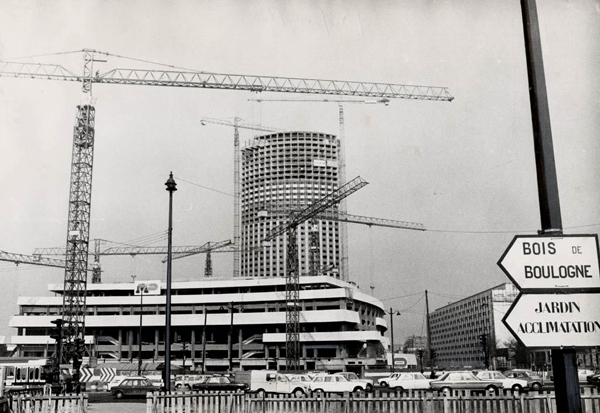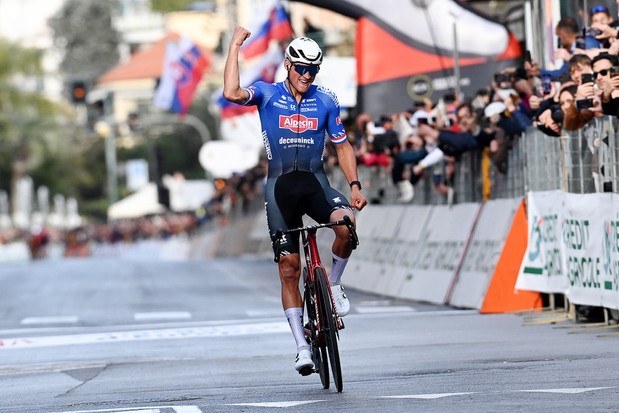Is Virtue Signaling Killing Architecture? A Candid Conversation

Table of Contents
The Rise of "Greenwashing" in Architectural Projects
The architectural world is increasingly focused on sustainability, but the line between genuine commitment and superficial marketing is becoming dangerously blurred. The trend of greenwashing in architecture sees architects emphasizing eco-friendly aspects primarily for promotional purposes, rather than implementing truly sustainable practices.
Superficial Sustainability
Many projects showcase a single "sustainable" material or feature while ignoring the overall environmental impact. This often involves:
- Selective use of sustainable materials: Employing reclaimed wood for flooring, for example, while the rest of the building utilizes high-embodied carbon materials.
- Over-reliance on certifications: LEED certifications, while valuable, can sometimes be manipulated to present a more eco-friendly image than the project truly reflects. The process itself can be costly, further incentivizing a superficial approach.
- Marketing over substance: Architects may emphasize "green" aspects in marketing materials without adequately addressing the project's overall environmental footprint. This creates a deceptive image for potential clients and the public.
The Cost of "Ethical" Materials
The increasing demand for ethically sourced materials presents another challenge. While laudable in principle, the higher costs associated with these materials can significantly impact project budgets. This can lead to:
- Increased project costs: Sustainable materials often come with a premium price tag, making them inaccessible for many clients and potentially limiting access to good design.
- Supply chain vulnerabilities: Ethically sourced materials may have longer, more complex supply chains, leading to potential delays and disruptions.
- The affordability paradox: The pursuit of ethical sourcing can create a tension between doing good and ensuring affordability, especially in social housing projects or public works.
The Neglect of Functionality and Practicality in Favor of Symbolic Gestures
The pressure to create visually striking and symbolically meaningful architecture can sometimes overshadow the fundamental principles of functionality and user experience. Virtue signaling in architecture can manifest as a prioritization of aesthetics and messaging over practical needs.
Form Over Function
In many instances, architectural design prioritizes aesthetics and symbolic messaging—using specific materials to convey a particular image—over the practical needs of the building's occupants. This leads to:
- Compromised user experience: Buildings designed primarily for visual impact might lack essential features that enhance user comfort, convenience, and accessibility.
- Poorly considered spatial planning: The pursuit of striking visuals can lead to inefficient or impractical spatial arrangements, negatively impacting the usability of the building.
- Public perception driving design: Architects might feel pressured to conform to certain aesthetic trends to gain public recognition and acclaim, even if it compromises functionality.
The "Instagrammable" Building
The rise of social media has introduced a new layer of complexity. The pressure to create "Instagrammable" buildings can lead to designs prioritizing short-term visual appeal over long-term durability and maintainability. This translates to:
- Short-lived architectural trends: Styles that go viral on social media can quickly become obsolete, leading to buildings that age poorly and require frequent renovations.
- Neglect of maintenance: The emphasis on visual appeal can overshadow the importance of durable materials and long-term maintenance planning.
- A focus on superficial design: The desire for eye-catching images can lead to superficial design decisions that lack depth and substance.
The Impact of Virtue Signaling on Inclusivity and Accessibility in Architecture
The pursuit of superficial displays of ethical practice can also negatively impact inclusivity and accessibility in architecture.
Tokenistic Inclusivity
Virtue signaling can manifest in tokenistic attempts at inclusivity, failing to address the systemic inequalities within the architectural profession and the built environment. This can involve:
- Superficial representation: Including a few diverse figures in design teams or projects without genuinely addressing systemic issues of underrepresentation.
- Lack of meaningful engagement: Tokenistic efforts often lack meaningful engagement with the communities they aim to serve.
- Ignoring structural inequities: Surface-level changes do not address the underlying power structures and biases that perpetuate inequality within the profession.
Accessibility Concerns
The focus on stylistic elements can easily overshadow crucial accessibility requirements, hindering inclusivity for people with disabilities. This often leads to:
- Designs that neglect accessibility needs: Prioritizing aesthetic choices over universal design principles can render buildings inaccessible to a significant portion of the population.
- Non-compliance with building codes: The pursuit of unique designs might lead to unintentional non-compliance with accessibility regulations.
- Ignoring user needs: A lack of consultation with people with disabilities during the design process can result in inaccessible spaces.
Conclusion
This article has explored how virtue signaling in architecture can lead to unsustainable practices, compromise functionality, and hinder genuine inclusivity. The pursuit of superficial sustainability, the prioritization of aesthetics over functionality, and tokenistic inclusivity ultimately detract from the core purpose of architecture: creating functional, sustainable, and inclusive spaces for all. Let's move beyond virtue signaling in architecture and focus on building a more sustainable, functional, and truly inclusive built environment. Share your thoughts on virtue signaling in architecture and how we can build a better future for design.

Featured Posts
-
 Top Nike Running Shoes For 2025 Style Performance And The Best Fit
May 26, 2025
Top Nike Running Shoes For 2025 Style Performance And The Best Fit
May 26, 2025 -
 Transformation Des Anciens Locaux Rtbf Au Palais Des Congres De Liege
May 26, 2025
Transformation Des Anciens Locaux Rtbf Au Palais Des Congres De Liege
May 26, 2025 -
 Dc Black Pride A Powerful Convergence Of Culture Protest And Celebration
May 26, 2025
Dc Black Pride A Powerful Convergence Of Culture Protest And Celebration
May 26, 2025 -
 New York Rangers Evaluating Recent Roster Changes
May 26, 2025
New York Rangers Evaluating Recent Roster Changes
May 26, 2025 -
 Fascisms Rise Delaware Governors Warning In A Changing Political Landscape
May 26, 2025
Fascisms Rise Delaware Governors Warning In A Changing Political Landscape
May 26, 2025
Latest Posts
-
 Paris Roubaix Bottle Throwing Spectator Surrenders To Police
May 26, 2025
Paris Roubaix Bottle Throwing Spectator Surrenders To Police
May 26, 2025 -
 Tirreno Adriatico 2024 Mathieu Van Der Poels Custom Bike Revealed
May 26, 2025
Tirreno Adriatico 2024 Mathieu Van Der Poels Custom Bike Revealed
May 26, 2025 -
 Canyon Aeroad Mathieu Van Der Poels Custom Ride For Tirreno Adriatico
May 26, 2025
Canyon Aeroad Mathieu Van Der Poels Custom Ride For Tirreno Adriatico
May 26, 2025 -
 Mathieu Van Der Poels Stunning Canyon Aeroad At Tirreno Adriatico
May 26, 2025
Mathieu Van Der Poels Stunning Canyon Aeroad At Tirreno Adriatico
May 26, 2025 -
 Pressure Mounts Ex Israeli Female Soldiers Advocate For Gaza Captive Release
May 26, 2025
Pressure Mounts Ex Israeli Female Soldiers Advocate For Gaza Captive Release
May 26, 2025
